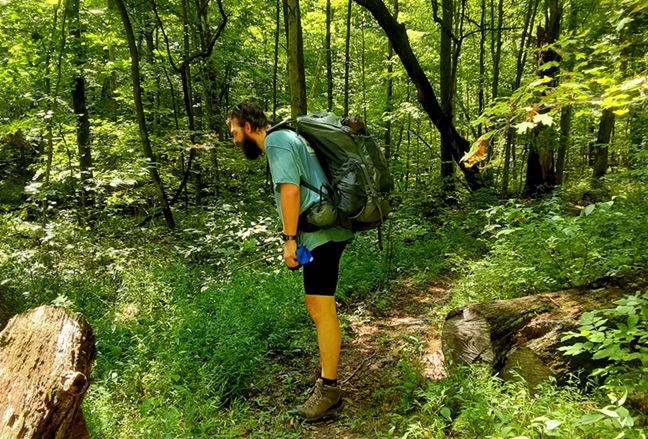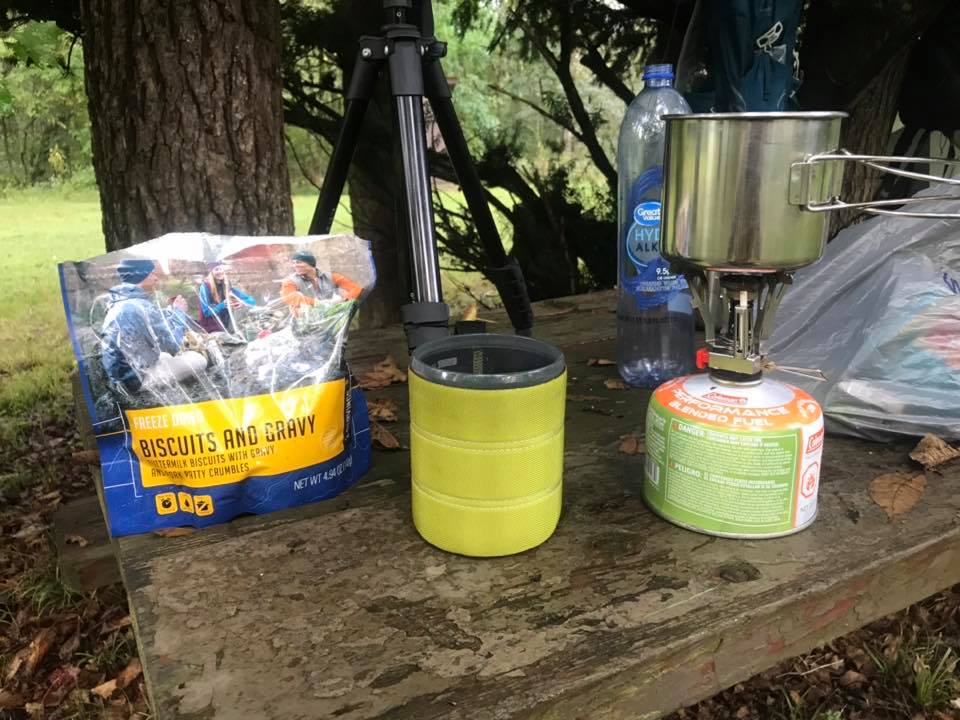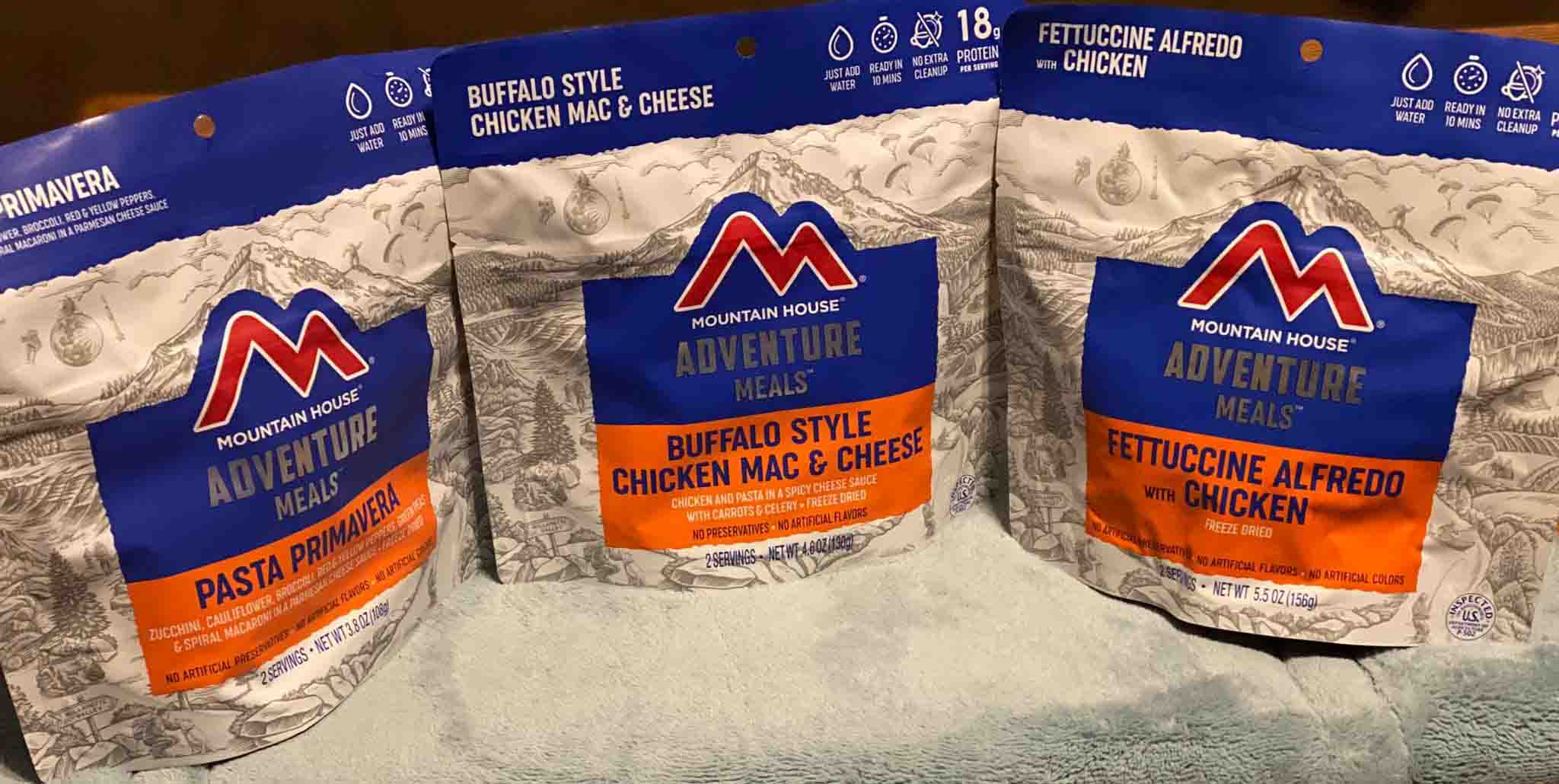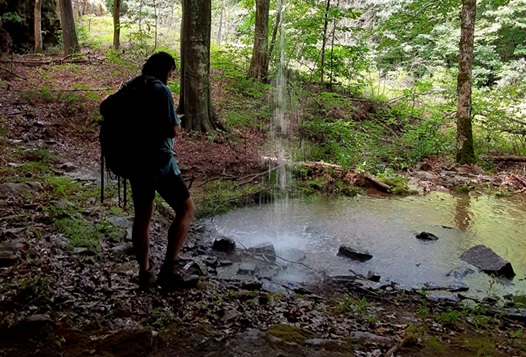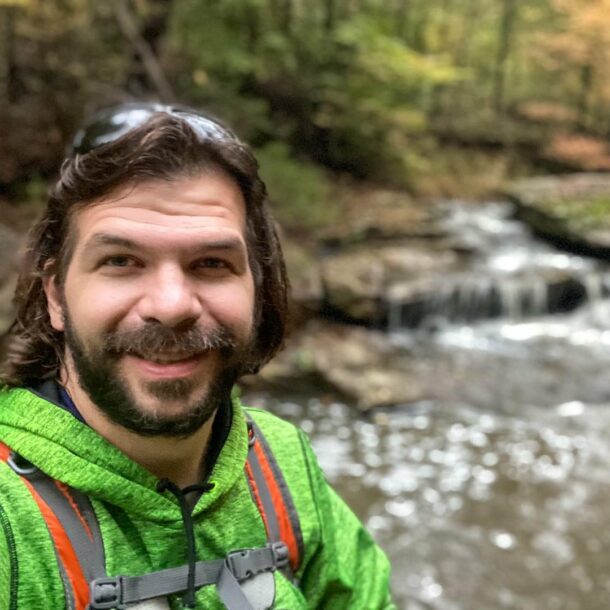10 Ultralight Hiking Essentials Guide
Start carrying the 10 ultralight hiking essentials if you want to be prepared but still remain ultralight while on the hiking trail.
Most of the time, carrying the essentials recommended for hiking means more weight on your back. If you’re into ultralight hiking, this will cause you great concern. Most of the time, ultralight hikers will ignore the 10 essentials and only risk having a bad experience because of that.
In this guide, I’ll show you the 10 ultralight hiking essentials to carry instead so that you can still limit weight and reduce the load off your back, shoulders, and feet.
Ultralight Hiking Essentials You Should Always Pack
The following ultralight hiking essentials have been selected based on their lower weight and carrying ease. You might find alternative products that work better. You should definitely shop around and use what is best for your needs.
1 – Ultralight Navigation Gear
Backcountry experts agree that you should have at least three forms of navigation while on the hiking trail.
Bring a map, but do you need an entire map of the area? No. Cut your map into smaller pages just to show the area you will be hiking in, but you may copy the map features and tape them to your smaller map so that you can still use them.
Bring a compass. You don’t need a really heavy, super-accurate combat compass to do basic compass reading. A simple plastic, lightweight map compass is all you typically need when hiking.
Bring your phone with a hiking app installed. You can find very small and lightweight power bricks to help you keep your phone charged, especially if that’s your only electronic device. I keep a small charging brick about the size of a roll of Tums in my pack, good enough to get a few charges on my phone if needed.
While three forms of navigation are highly recommended, you might find yourself hiking in an area you know well enough to only need one or two. Please use your own discretion and judgment for this, but make sure you always put safety first.
2 – Ultralight Skin Protection Gear
Skin protection gear is definitely something to add to the ultralight hiking essentials list, and luckily, there are many great options available that keep these items very lightweight.
If it’s bug season, you’ll want insect repellent. You can get repellent pins or even 25-oz containers with spray in them. This will be extremely ultralight compared to carrying a full can of bug spray with you.
A single tube of Chapstick is all you need if you need to keep your lips from being chapped. I don’t have that problem so it’s an item, I don’t bring with me.
Sunscreen lotion is available in very small packets, slightly larger than the mustard packets you get from fast-food restaurants. A few of them are probably all you need for your hike.
You might look into lightweight arm and leg covers for additional sun protection. Make sure they actually block UV rays. You should also bring a simple pair of sunglasses and maybe a hat.
These items really do depend on your needs. I bring a small packet of sunblock and use it as needed, but I also carry a larger bottle of insect repellent because they seem to love biting me, so I need as much as I can have in order to be comfortable on the trail.
3 – Ultralight Clothing and Layers
Wearing the right clothing while ultralight hiking can definitely be added to your ultralight hiking essentials list. The idea is to layer your outfit so that you don’t need to bring extra clothing with you but can add or subtract what you need based on the conditions.
Keep a close eye on the weather forecast leading up to the day you will be hiking. Try to be good at amateur weather forecasting because the better you are at it, the easier it will be to select the right clothing and layers to help reduce your clothing weight as an ultralight hiker.
Clothing choices are a personal preference. When I ultralight hike, I prefer compression clothing because I feel it’s significantly lighter, and the tighter garments tend to make me chafe less, but you may want something baggier. Here are some options based on various conditions:
- Summer Hiking: Half tights (men), Biker Shorts (women), or short inseam running shorts. A dry-fit T-shirt. Summer wool socks (they wick moisture better) and trail runners or hiking shoes.
- Cooler Hiking: Wear non-insulated leggings or tights (men and women) or lightweight hiking pants/joggers. Wear a dri-fit long-sleeve shirt. Wear wool socks. Wear lightweight boots or trail runners.
- Cold Hiking: Insulated tights or leggings (men and women) or winter hiking pants or joggers. An insulated hiking shirt. A hoodie or jacket. Thick wool socks. Hiking boots.
- You could use leg and arm warmers for additional layers or, on cooler hikers, wear shorts and a T-shirt.
- Pack a pocket-size lightweight rain poncho. If needed, it can also be used as a shelter (see below).
Only take the clothing and layers that you will actually need based on the temperature and weather forecast and how long you plan to be hiking. If needed, you might add things like gloves and a beanie to your kit. Colder weather tends to require more weight for hiking.
4 – Ultralight Illumination Gear
It’s important to be able to see in the dark while hiking. Even if you plan to be off the trail before nightfall, you can’t guarantee you will be. Something could happen, like you getting lost or hurt, and you might be out there later than you planned to be.
It’s often recommended to have a few different sources of light. I would suggest at least having 1 to 2 sources. You can bring a headlamp and keep it on your head as one source, or you can bring a very small, lightweight flashlight and keep it in your pack as another choice.
If you decide to just bring one light source, make sure you bring at least one set of extra batteries just to be safe. If not, make sure you turn your batteries the wrong way in your light to prevent it from accidentally turning on and just put them in right when you actually need to use them.
You might also substitute your flashlight for the light built into your phone, but remember that doing so will drain your battery. As suggested above, make sure you bring a battery-charging brick with you so that you can keep your phone charged.
5 – Ultralight First Aid Gear
First aid is important even in your ultralight hiking essentials kit. If you get hurt and you don’t have the right supplies to tend to it, you might find yourself in a very bad situation. Luckily, you don’t need a full trauma kit when hiking.
I highly suggest taking a small sandwich bag and creating your own lightweight first aid kit with supplies that you have used or would most likely use in the backcountry. My first aid kit would look like this:
- 3 to 5 Band-Aids of different sizes that can be worn in wet conditions.
- 1 pair of nitro gloves.
- A small set of tweezers or a tick pick.
- A couple peroxide wipes, alcohol wipes, and sting wipes.
- Gauze pads and medical tape.
- A smaller bag of antihistamines, antidiarrhea pills, ibuprofen, and Tylenol.
- 1 pack of blood clotting powder.
- TP and hand sanitizer (for pooping in the woods).
- Small whistle (for SOS signaling if needed).
Your pack might look different from mine. You might need to carry more items due to your medical needs or past experience, or you might decide to carry fewer items. Please make sure you put your own safety first, no matter how you decide on the items you wish to bring with you.
6 – Ultralight Fire Starting Gear
If you need to make a fire, you need to have something to start it. I highly suggest carrying at least a couple of things you could use to start a fire in case you need to cook, dry wet clothes, or stay warm in case you get lost or hurt and have to stay overnight in the forest.
I carry a container of wind-proof/water-resistant matches and a few fire plugs (small, corked-size treated plugs that will ignite quickly for fire starting). You might carry a small lighter or book of matches instead. Just make sure you keep your fire-starting kit dry.
You could also take cotton balls dipped in wax for easy fire starters or even a small piece of fat wood.
I also sometimes pack a feral rod, which, with my pocketknife, I can use to create sparks to start a fire.
Hopefully, you’ll never need to use your fire-starting kit unless you like to cook while out on the trail.
7 – Ultralight Tools and Repair Gear
It’s always ideal to take some basic tools and repair gear with you on a hike. You don’t have to take a lot, especially if you plan to carry less gear since you’re ultralight hiking.
I definitely recommend a knife. A folding blade knife is fine as long as it’s sturdy and dependable. A multi-tool with a knife might also be ideal as long as the tools are practical for hikers.
You really only need tools and gear repair items that are needed based on your gear. Maybe a little bit of duct tape to patch something, some yarn, and needle to sew up a rip, and a few zip ties to keep something together if it breaks.
Personally, I just carry a folding knife and some paracord with me when I ultralight hike. The paracord should be able to fix most things on my backpack, and that’s all I really need. I could use the knife to cut up small sticks and branches if I needed to make a fire.
8 – Ultralight Food and Fuel
It’s important to eat and stay fueled while on the trail. If you don’t fuel properly, you can suffer serious problems, like being hurt or fatigued. You should always prioritize fuel and hydration gear over everything else because you need them the most to survive.
Bring trail bars or snacks that don’t need to be refrigerated. Make sure they’re packed with protein and carbohydrates. These ingredients will help you stay fueled as you burn calories while hiking. Bring enough with you to last a few days, just in case.
Bring stuff that doesn’t require cooking if you want to keep it on your ultralight hiking essentials list; otherwise, you’ll have to increase your load with cooking and eatery supplies
Make sure you pack out your trash. There is no excuse for littering or improper trash disposal. Leave No Trace and leave the hiking trail better than you found it.
9 – Ultralight Hydration
Hydration is probably the most important piece of gear to have with you on a hike, and it will likely be your heaviest item, too.
You need to bring enough water to last you your entire hike, but it also needs to be enough to ration for multiple days in case you get lost or hurt and have to stay out longer than you planned to be out in the woods.
Some people choose water bladders (you can get them from 1 to even 3 liters), while others carry water bottles. Each type has different weights based on the construction and materials used to make them. However, water is water, and it will always have weight to it.
If you know for sure that an area has running creeks, you could bring a small water filter with you to replenish your hydration resources when needed. However, you need to make sure there is running water and know where creeks and springs will be along your route. I would always start a hike with the assumption that there are no creeks or springs, though.
Dehydration is serious. Not only can it kill you, but it can fatigue you to a point where getting lost or hurt will be easier. Don’t mess around with dehydration.
10 – Ultralight Emergency Survival Gear
You need to add at least some emergency survival gear to your ultralight hiking essentials list. In case something happens, and you need more gear, you’ll thank yourself for bringing some basic survival items.
You need an emergency shelter. This could be something like a tarp with a few paracords that you can quickly convert into a shelter from rain, snow, or ice. It could also be something that you’d use for multiple tasks, such as a pocket-sized rain poncho that is big enough to substitute as a makeshift shelter if needed.
You also want to have some kind of way to keep yourself warm. A simple pocket-sized shock blanket (the silver-looking one) might be all you need. You could also bring a lightweight quilt or even some extra layers. If it’s dry out, stuffing leaves in your clothes in an emergency situation can help create heat.
You might discover more emergency survival items needed based on your needs, but at least add shelter and warmth to that list because you never know what can happen.
Your Pack Options and Final Thoughts
We’ve discussed the 10 ultralight hiking essentials that you need to bring with you on every hike, but there is still one more thing to consider – your backpack option.
There are many options for backpacks when it comes to ultralight hiking.
You can get a very small-liter backpack made for ultralight hikers. These usually have only one compartment for all of your stuff. Many different brands sell these types of extremely lightweight packs.
Another option is a fanny pack or a shoulder/chest pack. These bags are small enough to carry most of the gear you might wish to take with you.
I tend to buy half-tights and full tights with cargo pockets on the sides. That gives me a few extra places to carry gear to lighten the load on my pack. You can also buy other hiking and athletic clothing with extra pockets for this.
Another great option is a hydration backpack, which usually contains a pocket for your water bladder and one to two pockets for your gear.
A smaller pack can help you take fewer things with you. However, it’s important that your ultralight pack can at least carry your 10 ultralight hiking essentials, so keep that in mind when choosing your backpack.
Now, I’d like to hear from you! What ultralight items do you carry on your hikes? What other suggestions would you have for people who want to lighten their load? What pack do you carry? I would love to have a great discussion about this in the comment section, so please comment away.
If you’ve enjoyed this article and want to support me in creating it, please consider leaving me a small one-time donation or becoming a monthly supporter for as little as $3.
Join my free hiking and backpacking forum to talk more about ultralight hiking no matter where you are in the world. Subscribe to my free monthly newsletter to get local hiking tips and upcoming event news sent to your inbox.
And until next time, I’ll see you on the trail!
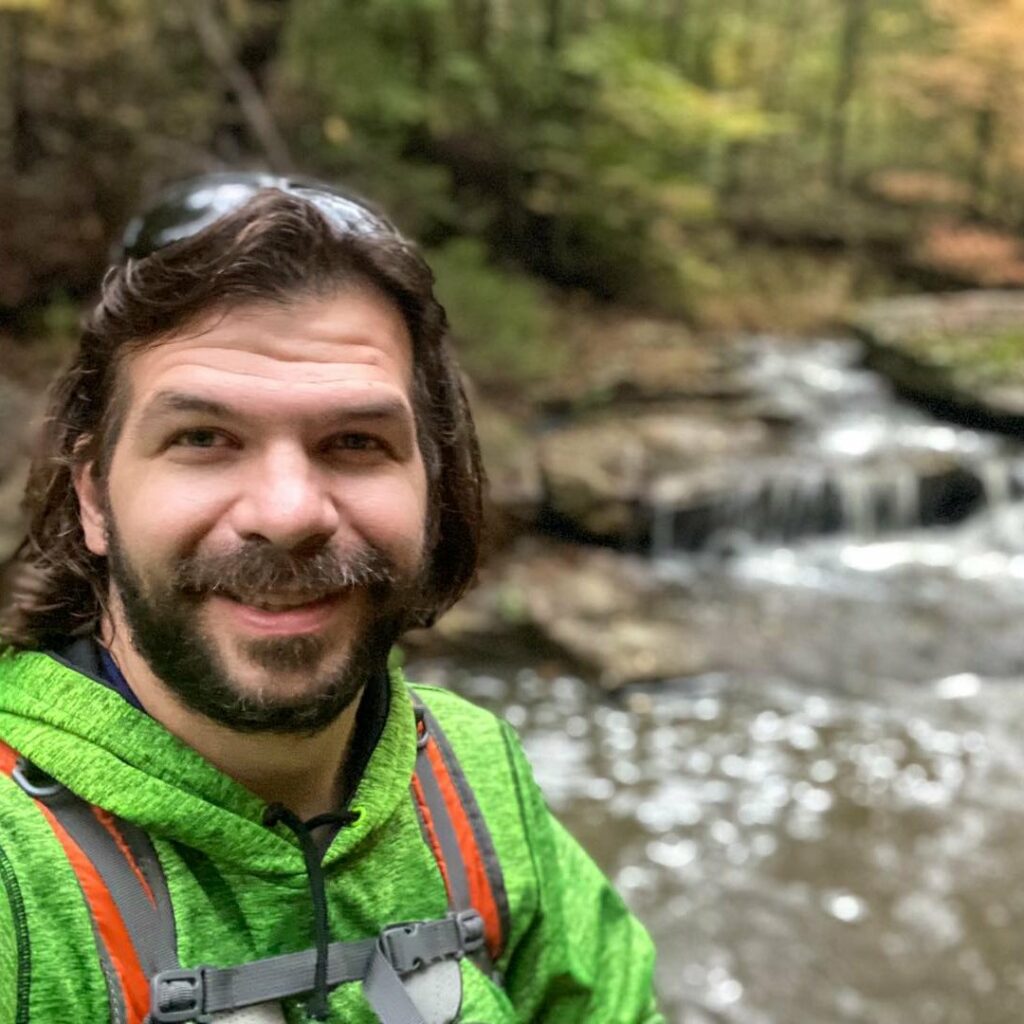
Shawn Gossman
Founder, Hiking with Shawn
Howdy folks! My name is Shawn Gossman and I founded Hiking with Shawn. I’m an avid hiker, cyclist and outdoorsman here in the Shawnee National Forest. I was born and raised in Southern Illinois and never want to leave. Click here to learn more about Shawn Gossman

